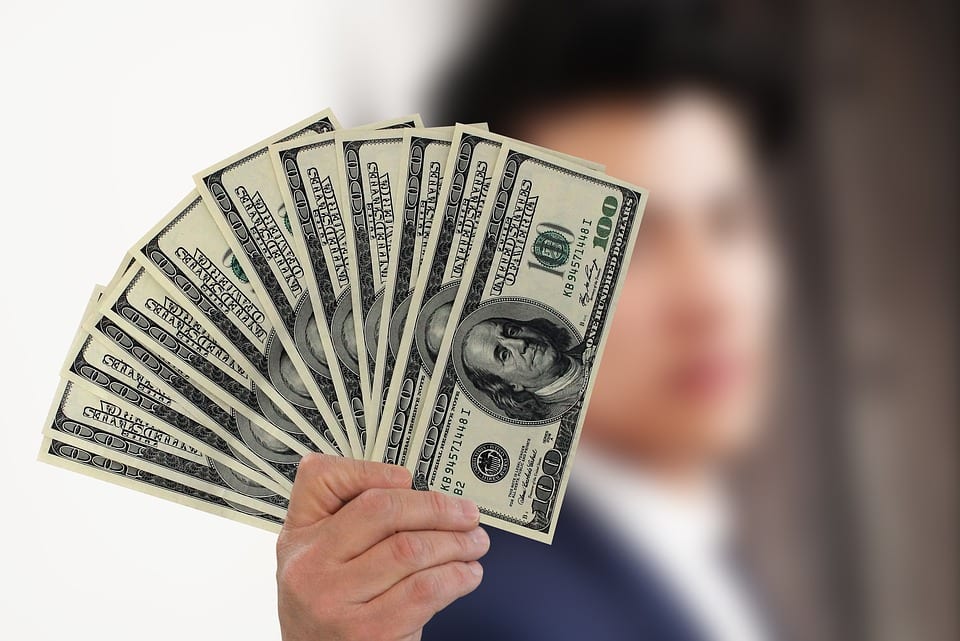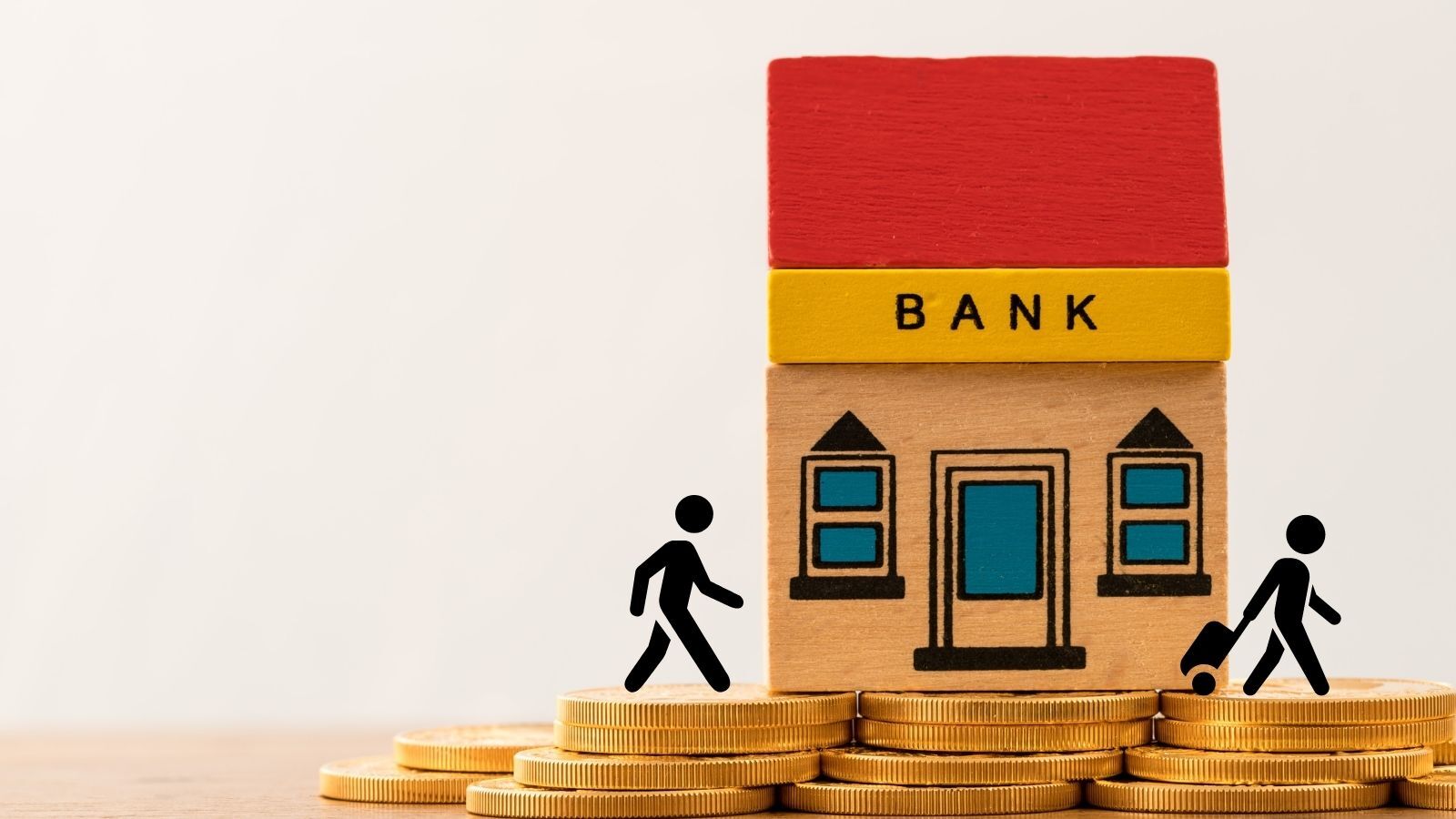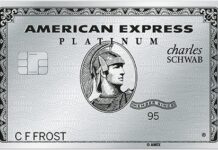I’ll admit it: I’m a bit of a points and miles hoarder. I generally keep more transferable points on hand than my family needs in the immediate future. Some of that is FOMO (“Fear Of Missing Out”) — that is, if an incredible award deal becomes available, I don’t want to be unable to book it. By the same token, if my family is stuck in a far-flung locale and our flight gets cancelled and/or we need to change plans at the drop of a hat, I feel security in knowing that I have the transferable points on hand to get us home comfortably from just about anywhere in the world. But I also wrestle with a question that many points and miles hoarders eventually must face: how much is too much? Should I “take the money and run”, cashing out points for dollars and cents in the bank? I did some of that a couple of years ago and mostly ignored the results until last week.

My 2021 cash out

Those with a Schwab Amex Platinum card can redeem Membership Rewards points at a value of 1.1c per point for deposits into a Schwab brokerage account. From there, you are free to do as you wish — invest the cash, transfer it to a different bank account, drive to Vegas and put it all on red — it’s all up to you.
There was a time when this redemption yielded a higher value — until the end of August 2021, it was possible to redeem points at a value of 1.25c per point. My wife and I did that and redeemed a large chunk of points on the last possible day in August 2021 for a deposit in my wife’s brokerage account. We used some of that as cash on hand to float various spending techniques, pay bills, etc.
However, we invested a chunk of that money. Specifically, 428,000 of our points were redeemed for $5,350 in deposits to my wife’s Schwab brokerage account. We then slowly invested that money over the latter half of 2021, investing the bulk of it in late November 2021.
I am not a financial advisor and do not mistake what I did as financial advice — it isn’t. Rather, I’m explaining what I did for your entertainment value.
I followed a very simple Bogleheads 3-fund investment strategy, putting the majority of the money into a Vanguard Total Stock Market fund (VTI), a smaller chunk into a Vanguard Total International Market Fund (VXUS), and a very small chunk into a Vanguard Total Bond Market Fund (BND). You can read more about the thought process behind that investing strategy in the the free PDF called If you can…how millennials can get rich slowly by William J. Bernstein. Note that I’m not a professional investor and I’m sure that there is a more tax-efficient way to allocate investments in different types of accounts and again I’m not recommending that you do the same thing — I was just setting this account up to mirror my overall strategy.
That’s all I did — I haven’t monkeyed with that money at all in the time since. I’ve merely set it up to automatically reinvest dividends and left it alone. I haven’t even made any effort at rebalancing to maintain our preferred asset allocation (which, as you’ll read in that PDF, I probably should have done). Instead, I just left it totally hands off. While I record balances in a spreadsheet monthly for all of our accounts, I didn’t specifically pay attention to this account beyond writing it down each month.
Notably, though I was hesitant to cash out the points at the moment when I hit the button to redeem, the truth is that I never missed those points. We didn’t really start traveling much again until midway into 2022 (almost a year after I made the cash out). Since then, we’ve been to Europe at least four times (in business class both ways each time), taken six cruises, gone to Hawaii, spent a couple of weeks in Florida, a couple of weeks in Las Vegas, and done some other assorted traveling around the United States. It’s safe to say that redeeming those Membership Rewards points did not prevent us from taking the trips we wanted to take in the interim.
Still, it was hard to redeem the points for what felt like subpar value in the moment when I did it because of the knowledge that if I held on to those points, I would probably redeem them for far more value someday.
In retrospect, I think that “knowledge” was at least a little bit flawed.
The points were a surplus for me

As I noted above, the absence of those Membership Rewards points from my account has not prevented me from taking the trips I wanted to take in the time since I cashed them out. I was able to replenish that many points (and many more) before I would have used them.
A crucially important point here is that while my numbers refer to the quantity of points for the sake of the math, the point is not the exact quantity of points. The math here would be the same whether I decided that I had 50,000 surplus points or 500,000 surplus points or 5,000,000 surplus points. You may look at a quantity like 428,000 points and think that it would take you years to replenish it and on the other hand a business owner who spends $100K per month on inventory may easily replace more than that quantity of points quarterly. In my case, this was a quantity of points that I:
- Didn’t need imminently
- Knew I could replace before I would need them
Long story short, I don’t feel like I’ve missed much by giving up those points. They were essentially surplus points — I had more points than I needed.
Back to the introduction of this post, a question we get with some frequency is “How many points is “enough”? Should I stop collecting points and focus on cash back?”. If you are a rabid miles and points collector, the incremental value of adding more points to your pile eventually decreases.
Points are really valuable when you don’t have enough for an award redemption you want. If you have 100,000 points and you need 200,000 points for a specific valuable award redemption, that next 100,000 points are highly valuable to you. In that type of situation, it wouldn’t make sense to redeem any points at suboptimal value knowing that you are en route to a much more valuable redemption when you have finished earning that next 100K points.
On the other hand, if you have all of your 2024 trips booked and you have 2,500,000 points left over, the value of the next 100,000 points is much slimmer since you probably won’t reasonably need those points any time soon. You would still likely accept an opportunity to earn an easy 100K points if you could earn them with little effort, but at the same time your range of “acceptable” uses for your points would be significantly different than the person who is still 100K points short of their goal post.
That’s all pretty intuitive since it is very much similar to cash economics in many ways — the “points rich” have a wider range of acceptable uses of their currency than the “points poor”, which would be the same if we compared dollars and cents.
There isn’t an easy answer to the “How many points are enough?” question. I think our general recommendation for readers has been to keep enough points on hand to book the next trip or two for however many passengers you ordinarily book.
In my case, since I have a family of four, I feel like my buffer zone is somewhere in the range of 400,000 to 800,000 points — enough to book my entire family in business class both ways for a trip or two at the very least. I feel even more comfortable with at least a million points spread across transferable points programs knowing that with that quantity, there likely isn’t a trip that I can’t take if a crazy opportunity arises. Of course, if and when I have a million or more transferable points on hand, earning the next million points feels much less urgent since those wouldn’t be used for a long time in the future.
That said, the speed with which you can replace points also makes a big difference in determining how many of your points are expendable. My view on whether points can be considered “surplus” points is at least partially influenced by my earn rate. For instance, if a million points is my comfort zone and I have that many today but I only earn about 200,000 points per year, I would feel more protective of my points than if I had a million points and I generally earned a million points a year. In that second circumstance, I would likely feel far more comfortable liquidating some points, particularly if I had travel already booked for the foreseeable future.
None of us have a crystal ball, so determining the variables here involves a lot of guesswork. However, I imagine that some readers have found themselves in situations where they’ve had at least some points sitting in their accounts for years waiting for the right redemption. If your account hasn’t dipped to zero points in recent memory, then you’ve likely had at least some surplus points. Exactly how many points you would have considered expendable is debatable, but I bet that many readers have carried a balance of points from year to year without using all of them.
If you’re in that situation, does it make sense to take the money and run?
The value I’ve gotten from my cashed out points

As of the time of writing, the investments in that Schwab brokerage account total about $6,015. That’s only a gain of about $665. The profit earned there over nearly 2.5 years is hardly enough to buy a single domestic business class ticket. At first glance, that doesn’t feel like enough of a win to justify giving up the opportunity for more luxurious travel, particularly when you consider the fancy premium cabin experiences that I could potentially enjoy with 428,000 Membership Rewards points. Surely 428K Membership Rewards points could buy me far more in international premium cabin airfare than I can get with $6,000 in cash.
As a base-level comparison, 428K points would at least theoretically (and thanks to my above-average flexibility, realistically) buy round trip business class tickets to Europe for my family of four. A simple example would be transferring to Air France / KLM Flying Blue, which charges 50K each way for the lowest saver-level seats and provides a 25% discount for children age 2-11 on long-haul flights. That would come to 350,000 points round trip for my family of two adults and two kids for a trip that would otherwise cost $10,000 to $15,000 in business class (for four people). There are other sweet spots for travel to/from Europe that would come out to a similar number of points (See: Best ways to get to Europe with miles or money.) or a myriad of other award travel examples.
But upon further consideration, what I’ve gained is perhaps a bit more significant than the numbers initially suggest. Consider the fact that the 428,000 points that I haven’t needed to use for a flight (we’ve maintained a constant balance of at least a couple hundred thousand Membership Rewards points in the time since those redemptions despite a lot of travel. Thank you, Amex Points Parade).
With essentially no effort (and the luck of a pretty strong market these past couple of months), we have essentially turned our 428,000 points into $6,015. While the mathematicians among us will argue a bit with the logic here (I’ll come back to recognize you in a minute!), in a manner of speaking that’s a value of 1.4c per point. While still below our Reasonable Redemption Value for Membership Rewards points, the fact is that the long-term value I’ve gotten per point has grown thanks to the ability of cash to grow when invested. By contrast, Membership Rewards points that were in my account before I cashed out that are still there today haven’t become any more valuable over time (and since program devaluations will always happen, one might argue that they will always become worth a bit less in the long-haul).
I’ve thus far averaged a rate of return of about 7.5% annually, which is pretty close to market-average over the long-haul. If that now-$6,015 continues to grow at a rate of 7.5% per year for a total of 10 years, I would have $11,026.52 in another ~7.5 years. That’s sort of like turning my 428,000 points into an effective 2.57c per point.
Of course it is imperative to note that my investments alternatively could have crashed (and still could) to zero value (though if my broad investments in total market index funds crashed to zero, there would likely be far, far more concerning things going on in everyday life than losing Membership Rewards points). On the other hand, in the high interest rate environment of the past few years, I could have achieved nearly as much gain in the right high-yield savings accounts.
Consider that I did this again in April 2022: I cashed out a bunch of points to free up money to put into I-Bonds, which were offering terrific fixed return at the time. See: Cashing out: Why Nick is dumping a chunk of points today. That time around, I cashed out points at 1.1c per point and put the money into I-Bonds. That money grew at an average annualized rate of return of 6.75% before I cashed it out in January of this year. In other words, 428,000 points cashed out at 1.1c ($4,708) grew to become $5,025.79 over 18 months (around 1.17c per point when you compare the cash outlay for the cash outcome). Unfortunately, I-Bond rates have dropped significantly since then.
Before the math nerds come at me with pitchforks, I should note that comparing the growth numbers to the original number of points is not really sound math. First of all, the amount of cash for which I traded away the points is the cash value — whether I chose to put that cash into an index fund or Bitcoin or put it all on red in Las Vegas was an independent decision that can’t be directly correlated to the points. I might argue that cashing out the points is what created the opportunity to create more cash value, but you can’t really draw a straight line from the number of points redeemed to the long-term cash value.
Furthermore, I’ll owe taxes on the growth (whether income tax on the bond interest or long-term capital gains taxes on the ETFs). So the growth isn’t really worth the face value either way, it is worth the face value minus my marginal tax rate at best. And I’m ignoring inflation entirely, which we all wish we could do but know that we cannot.
But the core point is that since I had points I wasn’t going to use any time soon anyway, what started as 428,000 points can and will continue to grow over time.
Is the juice enough to justify the squeeze?
I know that the tone I’ve taken so far likely implies that I think my cash outs were good decisions. At the same time, if you’re asking yourself whether even my shakey-math numbers like 1.4cpp and 1.17cpp are worth the opportunity cost of someday running out of points one or two trips sooner than I otherwise would have, I think that’s a reasonable question to consider.
In other words, will I someday run out of points and regret that I redeemed points for a value that is below our Reasonable Redemption Value? That’s certainly a risk. Is the downside of that bigger than the upside of the investment returns I’ll see?
I obviously won’t be able to answer that question until that day arrives. I hope it doesn’t happen any time soon and by the time it does I hope that I’ll either have seen enough of the world to be content and not feel bad for “missing out” on an award booking opportunity or that this game will have saved me enough money cumulatively over the years that I’ll be in position to throw caution to the wind and pay cash. Hopefully I won’t let you know how that gamble turned out for a very long time.
But in the bigger picture, I find myself at a stage of life where planning for the future is important. I have no intention to stop traveling any time soon (in fact, 2024 will be a pretty ambitious travel year for my family!), but at the same time I might be willing to trade a single trip for the chance to put more away for a rainy day. I wouldn’t trade all of the trips away any time soon and I probably won’t make a habit of redeeming points at 1.1c per point. On the other hand, if I have a chance to take down an intro bonus of 150,000 points and I already have “enough” points, whatever that means, I now see myself looking at that 150K points as being $1,650 plus long-term compounded growth closer to the long-term financial goalposts.
Will I continue to cash out points this way?
Despite the fact that I haven’t missed the points I’ve redeemed and that I feel good about the money these cash outs have produced, it is still hard for me to part with points for money because I know the types of experiences those points can buy (and that the corresponding “cash value” of the points can’t buy them!). So it’s hard for me to part with points.
And I’m hoping that my wife doesn’t read this post, because it will surely convince her that we should cash out more points. Funny enough, I would say that’s because she is more risk-tolerant than I am. That might sound backwards — you might think that her inclination to “cash out” while we’re ahead is the more risk-averse play. I’d argue it’s the other way around in that she’s less worried about the risk of missing out on future trips because she’s more confident that we’ll find a way to replace the points. That’s not to say that I don’t think we will continue to earn points but rather that she’s even more confident than I am about the speed with which we will.
And like a lot of things in life, she’s probably right. On the other hand, if the points parade suddenly grinds to a halt, I’m hesitant to be caught out in the cold without enough points to head for sunnier shores.
I think it is more likely that I’ll take stock of our points balances from time to time. When they exceed my “comfort zone” of around a millionish transferable points, I probably need to just be more rational about burning them and to commit to earning more. We are generally earning our points at a rate of more than 2 points per dollar spent whether that’s because of a category bonus, welcome bonus, authorized user bonus, etc, so we’re earning a very reasonable return in terms of cash value. That said, I try not to put a lot of spend on Amex at 2x or less because that spend could alternatively be put on a Bank of America Premium Rewards card or Unlimited Cash Rewards card for 2.625% back if you have Platinum Honors status with Bank of America (we moved IRAs to Merrill Edge a couple of years ago for this purpose). I do make some exceptions where I’ll put spend on Capital One at 2x because of the fact that they have a couple of different partnerships (like Turkish and like the MLB tickets I grabbed the other day). And it’s worth mentioning that I do put some spend on other cards at various multipliers or for certain benefits (for example, I’ve written about upgrading the Aviator Red to the Aviator Silver to spend toward status and companion passes).
Given my stated “comfort zone” of around a million transferable points, I think that moving forward I’ll probably look to slowly redeem 100,000 points for cash every time I hit a million transferable points, comfortable in the knowledge that I can earn another 100,000 before I’ll ever need them. Maybe over time I’ll up that to 200,000 points at a time.
Even that goal isn’t straightforward. I can’t seem to get enough Hyatt points these past couple of years, so I’m very hesitant to part with points that could be transferred to Hyatt. On the other hand, I’ve cancelled trips that have left me with six-figure airline miles balances with several airlines and that creates a buffer zone since I should be looking to use those airline-specific miles over transferring transferable currencies when possible. That probably creates enough buffer zone for me to consider 200K at every million.
Ironically, even though I have rarely ever actually used ANA Mileage Club, their recently-announced devaluation makes it a little bit easier for me to part with Amex points because I will now almost entirely be transferring to programs to which I can transfer from other currencies. On the other hand, also ironic is that I have frequently railed against the notion of transferring points to Southwest Rapid Rewards because of the fixed ~1.3cpp in value under the argument that you can get far more value from other foreign airline programs. If I’d accept 1.1c per point out of Amex Membership Rewards points, can I argue against accepting 1.3c per point in value with another rewards currency? The argument becomes murky at best.
Bottom line
I love award travel and I cherish the experiences it has made possible, both for me personally and for my entire family. I love redeeming my points for far outsized value for international premium cabin travel and fancy hotels. Yet at the same time, I recognize that holding onto unused points comes with a long-term cost. A couple of points and miles cash outs from 2021 and 2022 have recently made me think more about that cost. If I hadn’t redeemed those points for cash, I’d have about $1800 less today than I do. That’s small potatoes in the overall scheme of life, but I know that it can compound over time. Some of the FI/RE types out there will gladly cash out all of their points and go back to square one in terms of earning rewards in order to invest in their future financial independence. I’m not there, but thinking about the relatively short-term results of a couple of cash outs has me thinking that I should probably be doing more of this. Furthermore, I should probably set an annual goal for points that I intend to cash out and make it my mission to earn them at good return and burn them without sacrificing the trips I want to take. That will mean being even more focused on our earn and burn strategies, but it will add an element that I hope will continue to be rewarding for decades to come.





Great discussion of “How many points is “enough” – I think in these days of Amex points parade (even becoming limited with family/lifetime language) and Chase Ink parade, it’s always healthy to ask this question in the context of everyone’s points plan.
I cashed in all my UR points when PYB was offering 1.25-1.5 CPP. Since then, I have built up my balance to 400K over the years. You have to do whatever is in your best interest at the time you make the decision and not play Monday morning quarterback on what you could have done differently a few years later.
The one thing I regret is that the Chase 5/24 caught me by surprise when it was possible to churn Chase CCs often, earn and burn those points, and then get the card again.
PYB still always gives you 1.25cpp back for donations to a select list of charities. I like International Rescue Committee best from the list, and like Jose Andres’s World Central Kitchen. I give to charities anyway, so I use my Chase points for that at the elevated 1.25cpp rate.
Depends. I didn’t know that about Amex Charles Schwab but good to know. I don’t use our points a ton because I usually find reasonable deals of paying for tickets for miles and status on airlines more worth it. But I do use miles occasionally for kids. I just bought first class tickets for $100 more one way on our next Alaska flight. As a family of four we all have status MVP and DH has 75k status. We happened to have travelled a lot last year obviously and this year he and I are track for status and maybe the kids. So using miles often times not necessarily worth it to us.
So this is something to consider. I do tend to use it for hotels.
investments compound and points devalue or stay constant if you’re lucky over the long run.
Related I think – recently saw my TDAmeritrade account is being converted to a Charles Schwab one. I know of the CSP but I don’t know much about the product in the last couple years. Once that conversion goes thru, is there synergy with the CSP (or a link to that resource I can dive into)? I’ve got 1 BusPlat (and Gold, EDP). Is there a benefit from the two in either cashing out or growing points? Looking at the current 1.1cpp (if that’s accurate) I’ve got a decent amount of cash out of that but I feel like I’d like to use them more for flights right now. Unlike Nick and some of you all I don’t have that 1M buffer yet, and have been spreading spend around a little lately.
It may have been mentioned here before. A few years ago I cashed out $10,000 in MR points when the conversion rate was higher. I established and placed the money in a charitable donor-advised fund with Schwab, which has/had a $5000 minimum if I recall correctly. The money grows in that account with interest. I can make donations to various charities of my choice. I didn’t pay any taxes on the conversion yet received a tax deduction for the donation to the fund. It still feels like a win-win yet today. Feeling rich with this hobby, there are other avenues for those less concerned with self preservation.
Nice! I haven’t heard of that before. Sounds pretty cool!
That’s a great way to do it, especially at the old rate and back when more people did tax deductions (before min deduction increased so much). See my comments for how you can get the same 1.25cpp with Chase points (though not invested into a donor fund, but just as a one-time cash donation). The other thing I’ve done is used my points to buy plane tickets for immigrants who have claimed refugee status.
I agree and do the same. But talking about returns without mentioning the AF of a Plat card for at least 3 years is a bit of an oversight to put it mildly.
Fair point! I didn’t need to keep a platinum card the whole time though – could have just opened / upgraded to cash out. I imagine we’ll always have at least one Platinum card in my household. And these days, I’m making the coupon book work on keeping at least one.
Sure, but if you are only cashing out a couple 100k points and have a Biz Plat anyway, getting 1 cpp using their bank account is probably a better deal.
I have quite a few cashback cards that earn 2% or more, but I hardly use them, because I can get more value out of the miles/points I accumulated. I mostly use miles/points for international travel in premium cabins. For the miles/points sitting in my accounts, I assume I’d lose 10% per annum, for the lack of interest on those accounts and for nearly unavoidable periodic devaluation. Even with that assumption, I still come out ahead with earning miles/points (compared to earning cashback).
So much nonsense. You’re not a financial advisor and it shows. Four words for you: Time Value of Money
No, I am definitely not! Noted that in there:)
Was this a necessary comment? Nick noted he is not and said he was not giving one any financial advice. It was about his own circumstances and was solely for the readers’ entertainment.
I’d actually like to hear more. I’ve been in finance (and have also been an attorney) for many decades. I would never cash out as long as I am travelling several months a year because I am spending points as fast as they are coming in. Nick said he has points far in excess of his needs and is converting them to cash in order to invest the cash, due to “time value of money” (basically a fixed income concept) and the belief that over time, the market generally goes up (as long as you have enough time to wait out the downturns). So Nick is taking advantage of the time value of money because cash earns interest while points depreciate.
So, where is the nonsense? What does this have to do with being a financial advisor? I’ve met plenty of clueless financial advisors out there, and virtually none really understand points and miles. Do you not comprehend what we all are doing here? Or, are you just a troll?
Please be nice. Be kind. This is a great blog, and I think very highly of the FM team. If I want hard-core, detailed analysis of “the Hobby”, I come here.
Couldn’t have said it better myself, DSK. It appears that J D is the one who is spewing nonsense here. J D, if you don’t have anything meaningful to say, then keep it to yourself. Okay?
Amen to that comment. Also give the FM team credit for not just trying to sell the dream to everyone. I appreciate it when they talk about the real limits of how many points you can use (which doesn’t help them sell as many credit cards). I’ve also noted elsewhere that they seem to be the only blog willing to talk about the great value of the USB Altitude Reserve; others don’t discuss that bc USB doesn’t pay bloggers for referrals. FM keeps it real rather than always trying to bilk their readers.
This is really an argument about the time value of money. One cent today is (conservatively) worth ~1.05 cents next year and ~1.63 cents in a decade from interest. But one point will still be one point in a decade. If anything, that future point will be worth even less from devaluations.
I’m happy to get just 1cpp cash out with biz plat + biz checking in limited circumstances. I like to cash out the biz plat AF just so Im not buying these dubious credits and buying miles, it’s pure profit.
However, this to me only makes sense if you already have a cache of MR. From a utility theory standpoint, the more MR you have, the less value each incremental MR has to you. For example, if you’re sitting on 1M MR, when are you gonna use that 1 millionth MR even if you stop earning them altogether? 4 years from now? If so, you got to discount the value of those new MR by 4 years of returns.
So, you book family and friends closer in. That goodwill is worth way more than 1 cpp.
You don’t know my family.
I am in such a different situation! Being retired, we spend about 80-100 days a year travelling (excluding day trips–if you added those in, it would be much more, but they generally don’t involve points and miles). The number of times I have cashed in points is approximately zero. I hate booking trips using cash. Just about all of my trips are on points and miles because they give me something that a trip booked with cash can’t give me–the ability to make it all go away (or to change dates, or itineraries). I rarely stay at the hotels I initially book or go on the flights I initially book, since I can generally change plans for free or cheaply so I am always looking out for a better deal. I always book far out because it is basically a free option–if prices go up, I keep what I’ve got, and it they go down, I rebook. Similarly, I may initially book a hotel room on points to hold the redemption slot, and then cancel it if can switch to a credit card hotel certificate. So, I earn lots and lots of points and miles, but they are never enough.
Exactly. If it weren’t for all the crazy options baked into points and miles, I would not be so interested in them. They allow us to travel in ways that we could not in a money-only hotel and airfare environment.
But the converse is not true: There is nothing in the currency-only outside-of-travel environment that I get any leverage on by cashing out points and miles. The “cash value” (even if mostly theoretical) of these accumulated points would not make a dent on that non-travel life.
Don’t forget paying for grandkids.
I have transferred millions of MRs to Schwab over the years and invested it all in VOO. Mid-5 figures account, so it’s decent pocket money. And I have never missed any of those points. Heck, this post reminded me to transfer over another slug to Schwab.
Nick, my wife and I have an overabundance of points and we continue to earn points. We considered cash back but opted to continue to earn points. Why? Gifting travel to family, friends, and employees. Teach them all of the nuances of the hobby? They typically don’t have the aptitude, time, or interest to pursue the hobby. So, we apply our hobby skills and they get to travel.
That’s a great use of points. Builds relationships which is so good for you. Don’t overlook the value of that.
I care so much more about financial freedom than business class flights. I’ll take the business class flights when I reach financial independence, until then, I work the points parade and cash them all out into a Roth IRA with a pretty aggressive investment strategy. Currently at $50k. I hope to one day say that I turned my Amex points into a million dollars. To be clear I have plenty of other investments, but i just really want to see if I can exclusively turn my Amex points into $1M. May take 20+ years, but that’s the goal.
Awesome. Einstein was right — compound interest is the most powerful force in the universe and those who understand it, EARN it, and those who don’t, PAY it!